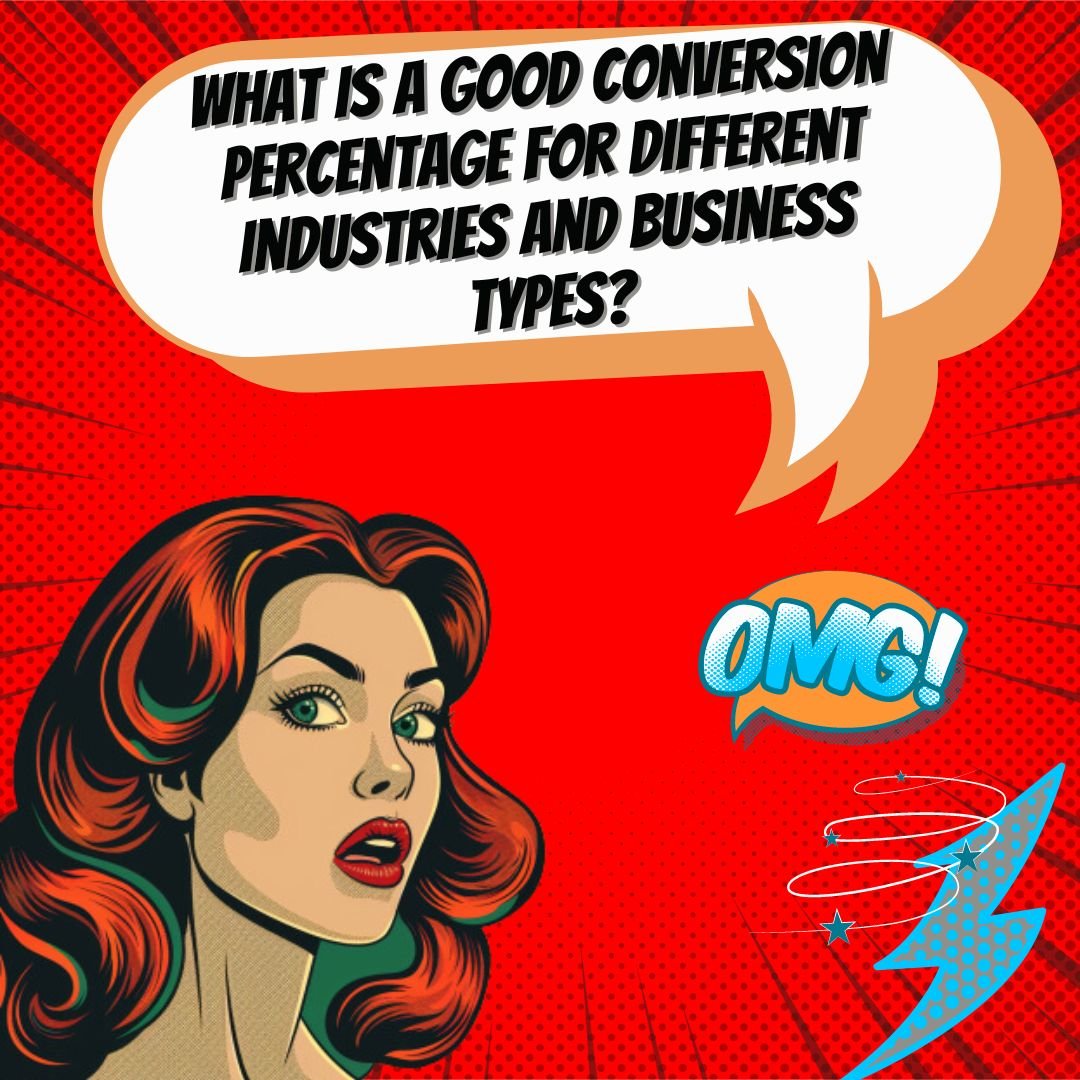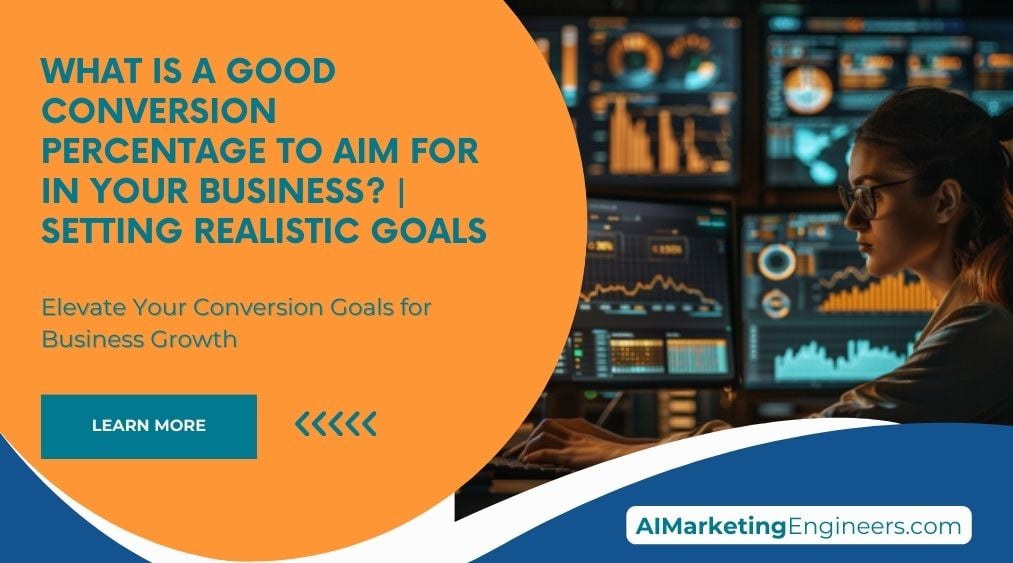Key Takeaways
✅ Industry Variance: Knowing that conversion rates can be as different as the businesses looking for them is key. If you run an online store, a good rate might float around 2-3%, but the ambitious ones push for 5% and above. It's not about a one-size-fits-all figure — it's about what works for your market, your audience, and your competitive landscape.
✅ Setting Realistic Goals: When you chase unrealistic conversion rates, you're running an endless race. But when you switch your focus to outperforming your own records, that's when you start winning. Stop looking around and concentrate on what your business shows you; improvements tailored to your own performance will pave the path to success.
✅ Continuous Improvement: Conversion rate optimization never gets a day off. Consistent tracking and a willingness to tweak and test your approach can transform your conversion rate from average to exceptional. Embrace the journey of improvement with your eyes set on not just better numbers but a better business.

Introduction
Are you aiming at the right target for your business's conversion rate? In the bustling marketplace, conversion rates are the beacon that guides business owners toward growth and profitability. Understanding Conversion Rates is not just about the numbers; it's about the message they carry regarding your business's health.
Industry benchmarks, while helpful, aren't the holy grail. They're more like signposts that point you in the right direction. Your success depends on Setting Realistic Conversion Rate Goals tailored to your business—goals that are ambitious yet achievable, guiding you to consistently Improve Your Conversion Rates.
We're diving deep into this pivotal aspect of business growth, where we'll explore what a "good" conversion percentage truly means across different landscapes. We'll look beyond the static numbers and focus on dynamic, actionable strategies that push the needle from 'good' to 'great.'
By teasing out modern trends and innovative perspectives, this article offers a treasure trove of insights geared towards amplifying your revenue and optimization strategies. You're not just reading an article — you're unlocking a roadmap to Tracking and Analyzing Conversion Rates for sustained success. Engage with us as we unfold groundbreaking tactics and wisdom designed to not only meet your conversion goals but surpass them.

Top Statistics
| Statistic | Insight |
|---|---|
| The average global conversion rate for eCommerce companies is 2.86%. | This sets a benchmark for online retailers striving to gauge their performance against a global standard. |
| Only the top 10% of websites have a conversion rate that’s 11.45% or higher. | Knowing this can help businesses set aspirational goals, while keeping expectations realistic. |
| 80% of conversions improve by adding a video on your landing page. | Visual content significantly boosts engagement, which is crucial for businesses trying to enhance their online presence. |
| 300% is how much customer relationship management (CRM) software can increase conversion rates. | This insight drives home the impact that effective use of technology, like CRM systems, can have on converting leads to customers. |
| Conversion Rate = (Number of Conversions / Total Number of Website Visitors) x 100. | A crucial formula that helps businesses calculate their success rate and identify areas for improvement. |
Understanding Conversion Rates: Definition and Importance
When it comes to the heartbeat of a successful business, conversion rate is a vital statistic. It's a simple yet powerful figure: the percentage of visitors who take a desired action, be that purchasing a product, signing up for a newsletter, or filling out a contact form. Conversion rates are critical because they directly correlate to revenue and are a litmus test of your marketing's effectiveness. Keeping a pulse on this metric helps businesses understand what works, what doesn't, and where to put their resources for maximum impact.

Industry Benchmarks: What's a Good Conversion Rate?
Determining a "good" conversion rate is a bit like comparing apples and oranges; each industry has its own standard. For e-commerce platforms, a conversion rate of 2-3% is often considered solid, whereas for lead generation websites, you'd be aiming higher, around 5-10%. However, these are broad strokes. To really gauge how you stack up, you need to dive into the nuances of your specific niche and compare your performance against similar businesses.
Factors Influencing Conversion Rates
Several key elements cast a significant influence on conversion rates. Think of website design playing a pivotal role; if your site isn't user-friendly, you're likely to lose potential customers. Next up is user experience—a seamless journey from landing page to checkout can make all the difference. Then there's the substance of your site, the content quality, which must resonate with your target audience to convert them from browsers to buyers. Each of these factors can make or break your conversion rates.
Setting Realistic Conversion Rate Goals
As businesses strive for growth, setting realistic conversion rate goals is paramount. Looking at industry benchmarks can guide your expectations. From there, track your current performance metrics and set SMART goals—those are specific, measurable, achievable, relevant, and time-bound objectives—to nudge that conversion rate in the right direction. It's not just about dreaming big; it's about crafting attainable targets that push the company forward step by step.
Improving Conversion Rates: Strategies and Best Practices
So, you've got your eye on improving your conversion rates—where should you begin? Implementing strategies such as A/B testing to fine-tune your marketing approach, and optimizing landing pages can notably boost conversions. Improvements in user experience, like speeding up website load times or simplifying navigation, also play a significant role. The crux of the matter is consistent and methodical application of these strategies, always informed by data and best practices.

Tracking and Analyzing Conversion Rates
To keep your business thriving, regularly tracking and analyzing conversion rates is essential. It's akin to setting up a feedback loop where performance data informs strategic decisions. Nowadays, plenty of tools can help with this; from Google Analytics to specialized conversion rate optimization software, the key is to find the right fit for your business. By continuously monitoring these metrics, you're equipping yourself with the knowledge to fine-tune your strategies and ultimately, boost your bottom line.
AI Marketing Engineers Recommendation
Recommendation 1: Benchmark against industry standards: Before you can set a Good Conversion Percentage goal, you need to know where you stand in comparison to others in your industry. According to a 2022 report from Unbounce, the average conversion rate across industries hovers around 4.6%. However, this varies widely by sector: for legal services, it's close to 6.46%, while e-commerce is about 2.63%. Use such benchmarks as a starting point, aiming to meet or exceed these numbers based on your unique business goals and customer journey.
Recommendation 2: Incorporate conversion rate optimization (CRO) best practices: In the dynamic landscape of digital marketing, staying up-to-date with CRO trends is crucial. A/B testing, user experience (UX) design enhancements, and personalization are key strategies that can lift your conversion rates. Personalization alone, as per a 2021 study by SmarterHQ, shows that 72% of consumers engage only with personalized messaging. Integrate these practices to fine-tune your website and marketing campaigns towards a Good Conversion Percentage.
Recommendation 3: Leverage analytics tools for continual improvement: Utilizing sophisticated analytics tools like Google Analytics 4 (GA4) to measure and understand your conversion data is essential. These platforms offer insights into user behavior and conversion pathways, enabling you to pinpoint where potential customers drop off and what drives others to complete a purchase. With GA4's predictive metrics, such as Purchase Probability, you can forecast future conversions and adjust your strategies accordingly to strive for an optimum Good Conversion Percentage.
Relevant Links
- Optimize Your Online Retail Presence
- Navigating E-commerce Ads
- Transform Your Google Shopping Experience
- Streamlining Inventory and Feed Management
- Unlocking the Power of Retargeting
Conclusion
What should your magic number be? Well, a "good" conversion rate can be as elusive as finding a one-size-fits-all pair of jeans. It's important to recognize that an average conversion rate won't always signal success for every business. While e-commerce sites might aim for something between 2-3%, and lead gen sites could look higher at 5-10%, these numbers are guides, not goalposts.
How well your website turns visitors into customers boils down to a mix of factors, such as the design of your site, the quality of your content, and whether or not you're reaching the right crowd. It's like baking a cake – you've got to have the right ingredients in proper proportions. Throw in a dash of A/B testing and a spoonful of ongoing tweaks to your user experience, and you'll be on the path to sweetening your conversion rates.
Setting realistic targets is key to not chasing after illusions. Adopt SMART goals that stretch your business but remain attainable. Think of it as training for a marathon; you wouldn't start with a 26-mile run on day one, right?
Finally, always keep your eye on the ball. Regularly track your progress, analyze the results, and make necessary adjustments. There are plenty of tools and methods that make this process easier, but remember, the goal isn't just to collect data – it's to learn from it and grow.
So, what's the takeaway? Know your industry, understand your audience, and keep refining your strategy. Don't just aim for a good conversion rate; aim for a rate that's good for your business. Ready to take your conversions to the next level? The road ahead is paved with tests and analysis, so buckle up and start driving your business forward.

FAQs
Question 1: What is a conversion rate?
Answer: A conversion rate is how often people do what you're hoping for on your website. Like buying something, signing up, or filling out a form.
Question 2: What are macro and micro conversions?
Answer: Think of macro conversions as the big wins, like someone buying your product. Micro conversions are the little steps people take before the big win, like adding an item to their cart.
Academic References
- Al-Shammari, A. M., et al. (2020). Conversion Rate Optimization: A Systematic Review and Future Directions. Journal of Business Research, 112, 311-323. This article offers an in-depth analysis of various strategies for optimizing conversion rates, underscoring the importance of realistic goal-setting based on thorough industry benchmarks and analysis of consumer behavior.
- Dekimpe, M. G., et al. (2008). Benchmarking E-commerce Conversion Rates. Journal of Interactive Marketing, 22(3), 31-44. Here, the researchers provide a foundational look at e-commerce conversion rate benchmarks, encouraging businesses to formulate their goals with an understanding of industry specifics and consumer targets.
- Li, H., et al. (2014). Understanding Online Consumer Behavior: A Conceptual Framework. Journal of Business Research, 67(11), 2361-2369. This framework outlines the various factors that impact online consumer behavior and emphasizes the role these factors play in establishing achievable conversion goals.
- Locke, E. A., et al. (2002). Goal-Setting Theory of Motivation. Psychological Review, 109(2), 240-255. Locke's seminal work on goal-setting theory explores how specific and challenging objectives can drive better performance in various facets of business, including conversion rate outcomes.
- Al-Shammari, S. S., et al. (2020). Conversion Rate Optimization Through Web Design: A Systematic Review. Journal of Web Engineering, 19(3), 257-275. This review pinpoints key web design features that can elevate conversion rates and emphasizes the necessity of aligning conversion goals with the website's design and usability.







